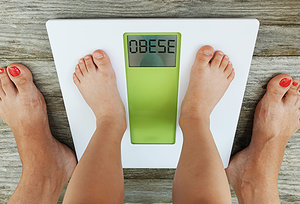Let's Help Our Kids
By Editorial Staff
Obesity is an often-overlooked (or ignored) public-health epidemic, and it's not just adults who are suffering. An increasing number of children are obese, which not only plants the seeds for potential weight issues as adults, but also elevates the risk of long-term health issues linked to metabolic dysfunction, high blood pressure, high cholesterol and more.
Simply put, our kids need help, a point emphasized by a new study that demonstrates how childhood obesity has increased over the past decade. Obesity was defined as "BMI for age at or above the 95th percentile based on the Centers for Disease Control and Prevention growth chart."
According to the study, which examined obesity prevalence from 2011-2020 among children ages 2-19, the percentage of obese U.S. children increased in all age groups from 2011-2012 to 2017-2020: From 18.1% to 21.4% in boys and from 17.2% to 21.6% in girls. When considering particular age groups, obesity increased significantly for children ages 2-5 and adolescents ages 12-19, but not for children ages 6-11.
 When we consider the obesity epidemic, adults and children face similar challenges: an increasingly sedentary lifestyle characterized by dependence on technology (which replaces active time); and poor diet linked to the proliferation of processed foods. However, those similar challenges also hint at similar solutions: changing these lifestyle behaviors to reduce sedentary time and improve diet quality. Our kids need our help. Let's model healthy behaviors so we can all escape the obesity epidemic before it's too late.
When we consider the obesity epidemic, adults and children face similar challenges: an increasingly sedentary lifestyle characterized by dependence on technology (which replaces active time); and poor diet linked to the proliferation of processed foods. However, those similar challenges also hint at similar solutions: changing these lifestyle behaviors to reduce sedentary time and improve diet quality. Our kids need our help. Let's model healthy behaviors so we can all escape the obesity epidemic before it's too late.
Note: If you think your child is overweight or obese, talk to your doctor first to make sure there's cause for concern from a health perspective (not just a growth phase or BMI classification that might not reflect their true health).

